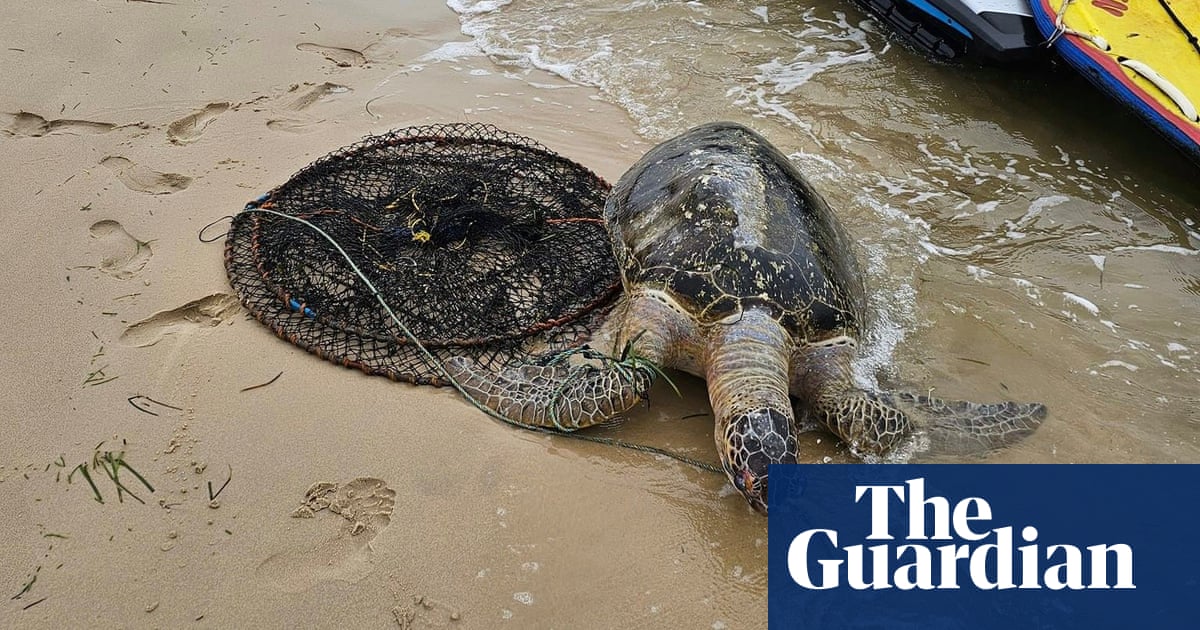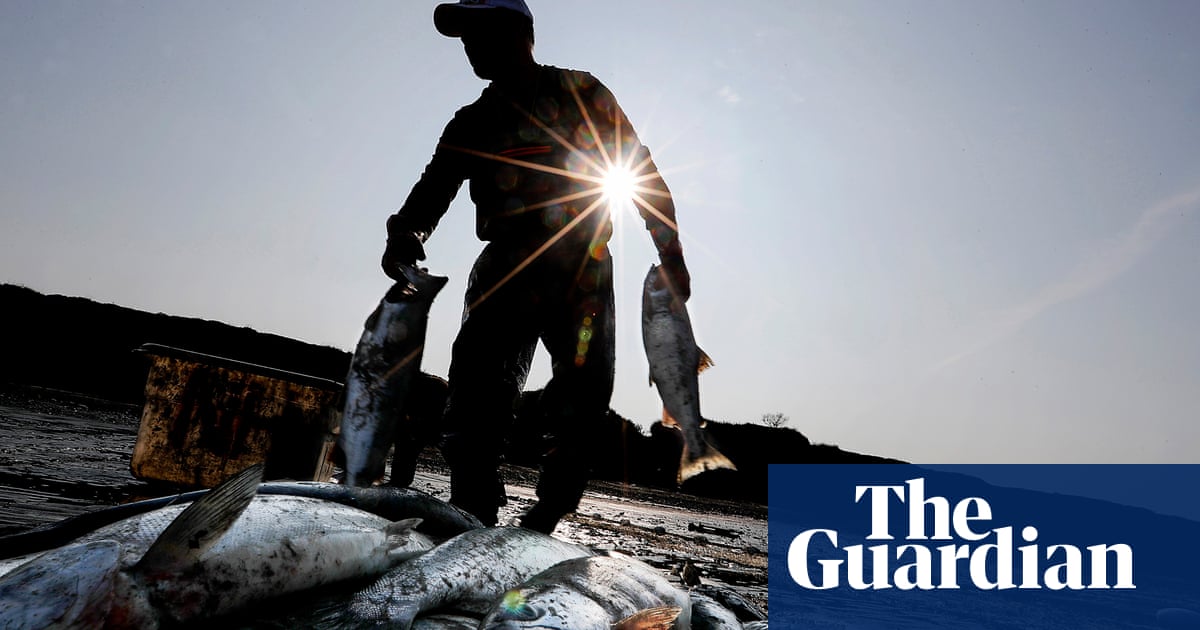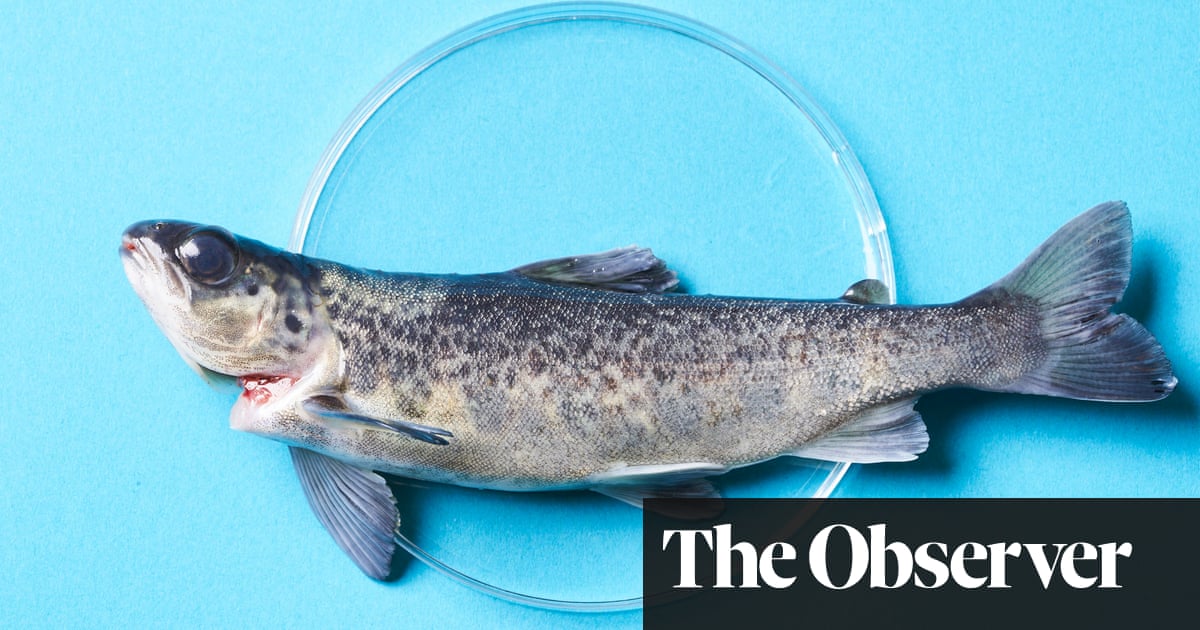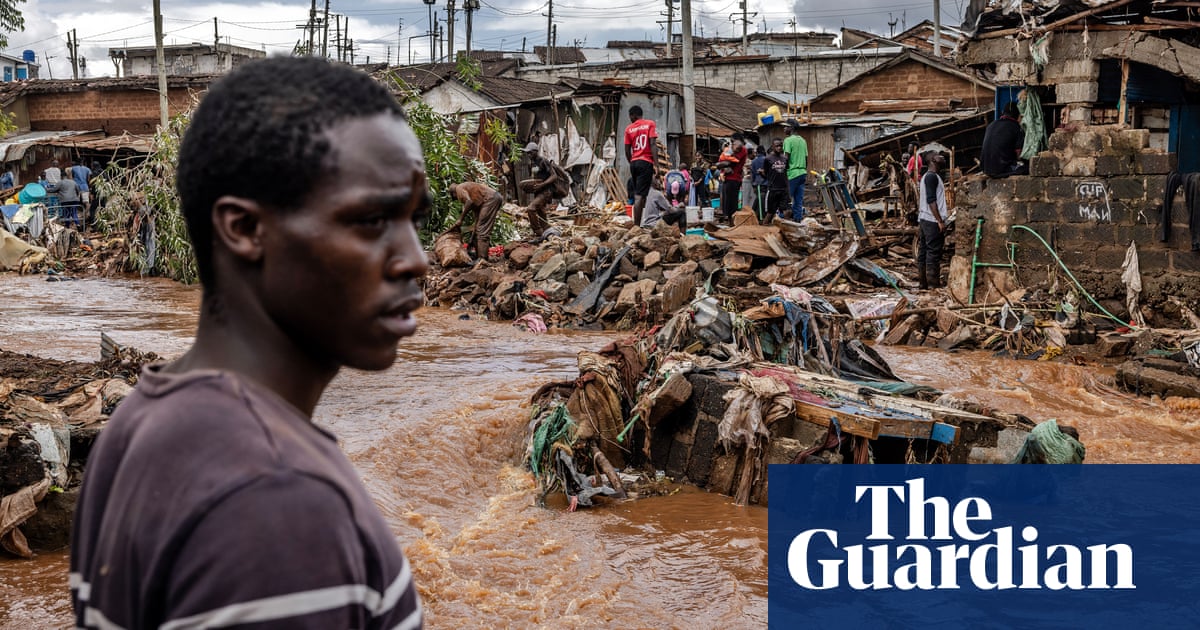Turtle deaths surge in Moreton Bay as advocates decry ‘loosey-goosey’ waterway policing | Queensland


Turtle deaths in a key south-east Queensland habitat have increased 87% in a single year and there are concerns that uncontrolled boating, four-wheel driving and discarded crab pots could result in more fatalities.
The annual turtle death toll average in the Bribie Island area – which includes Beachmere to Caloundra, Pumicestone Passage and Bribie Island – had been at 36 for a decade.
But data from October revealed a stark increase in turtle deaths in the Moreton Bay marine park area, with 68 fatalities in a single year.
More than half of these deaths – 38 – were categorised as cause unknown, according to the figures from the state’s environment department.
The second highest cause of death was “vessel interactions”, which killed 11 turtles. Fishing activities killed 10 and disease claimed the lives of six turtles.
The remaining three fatalities were caused by “anthropogenic sources” which includes damage consistent with “human activity” but that is “not clearly attributable to fishing or vessel related activities”.
A Department of Environment and Science spokesperson said the south-east Queensland region had seen an increase in “deceased stranded turtles” since the 2022 floods.
“The department has an ongoing investigation into the impacts of this weather event on marine threatened species, jointly funded by the Commonwealth and Queensland Government under the Disaster Recovery Funding Arrangements (DRFA),” they said.
Bribie Island turtle trackers have observed nine turtle deaths in January alone, with many injuries and deaths sparked by human activity.
Local turtle tracker Diane Oxenford has lived on the island for almost two decades. She said that due to the “loosey-goosey” policing of speed restrictions, boats and jetskis often race through the Pumicestone Passage.
“This is the problem. We have a tourism model that promotes unrestricted and uncontrolled access to internationally protected waters,” she said.
Oxenford said discarded crab pots were also causing turtle drownings and severe injuries. A sweep of the passage by the Queensland Parks and Wildlife Service (QPWS) detected 85 abandoned crab pots last year, Oxenford said.
The turtle nesting season occurs during the island’s peak holiday period when people flock to the beaches and 4WDs drive along the sand.
“We had thousands of people go up [on the beach] on Australia Day. It’s unsustainable,” Oxenford said.
“All I can think about is when our little baby turtles cross the beach … only one in 10,000 survive that journey. It’s critical to get as many hatchlings out as we can safely.”
Greater awareness, bigger fines
Jacques Van Niekerk, the owner of Caloundra Jet Skis, operates regular tours through the waters north of Bribie Island and the Pumicestone passage. He said he had seen four dead turtles in the region since buying his business in 2020.
Last week, Van Niekerk discovered a dead turtle near Sandstone Point that was entangled in a crab pot line that was more than 12 metres long.
“My biggest push now is to go on a crusade to either ban [crab pots] or change the method of how they are fishing,” he said.
Van Niekerk believes jetskis cause less damage to marine life than boats and says he educates tourists about turtles and other marine creatures before every tour.
“I cried my heart out when I saw one [dead] the first time. Not enough is being done. We need huge awareness, huge penalties and fines.”
And it is not only the Moreton Bay region that is seeing a decline in sea turtles.
after newsletter promotion
Marine scientist and associate professor at University of Sunshine Coast, Kathy Townsend, said turtles in the Fraser Coast region were also suffering in the aftermath of the 2022 floods.
In Hervey Bay, there has been a drastic reduction in the seagrass turtles feed on, according to Townsend, and they are also being affected by a potentially fatal soft-shell disease.
The decline in food resources leaves turtles “weakened” and more susceptible to death from disease and hazards, she said.
“They’re less likely to get up and be able to get out of the way of things like boats as easily,” Townsend said.
Many key solutions lie in managing human impact on the animals, she said.
“Four-wheel drives on beaches are a problem full stop in the south-east Queensland region, ranging from South Stradbroke Island all the way up to K’gari,” Townsend said.
“Climate change … crab pots … turtles are literally being attacked from every angle at the moment.”
Townsend said turtles are the “canary in the coalmine” of Queensland’s marine species.
“These species have literally been around since the dinosaurs. If we’re seeing issues with sea turtles then we know that there’s things going on with the broader environment and ecosystem,” she said.
A department of environment spokesperson said QPWS rangers undertake “regular patrolling throughout the Moreton Bay marine park, as well as “regular compliance patrols to monitor visitor behaviour and to enforce appropriate beach-driving practices”.
Queensland environment minister, Leanne Linard, said “any loss from the population of turtles that call Queensland’s waters home is heartbreaking”.
“Unfortunately, we have seen an increase in reported deceased marine turtles in recent years,” she said.
“Some of these deaths are a result of disease or the turtle’s poor health. Others, tragically, stem from human impact, such as boat strikes or fishing activities.”
Linard said the department is finalising its response to a study of the use of the Bribie Island national park and recreation area, which will be released in the coming weeks.
“The government will continue to work with marine scientists and turtle experts, stakeholders groups such as Coastcare, the Australian Government and the wider community to implement strategies to protect these majestic creatures.”
Source link




